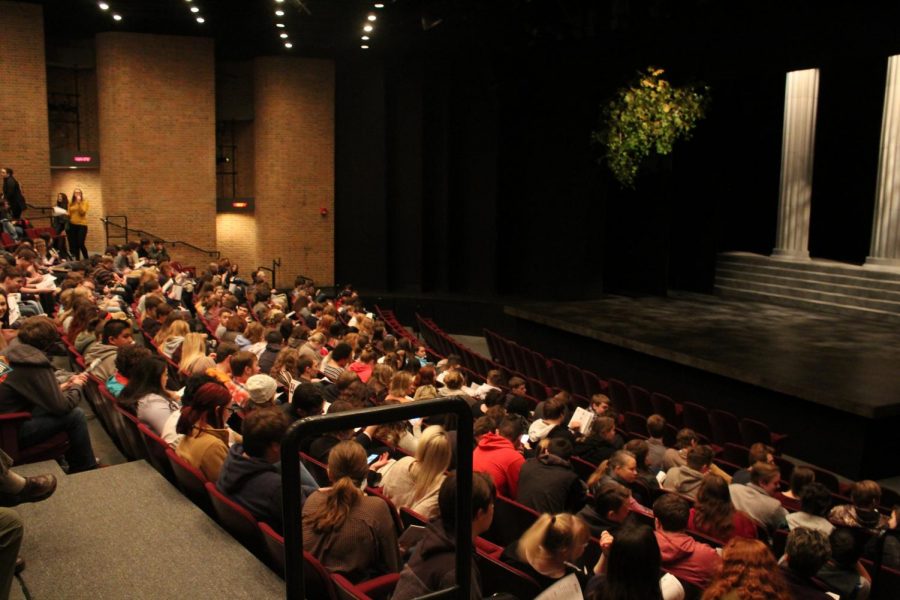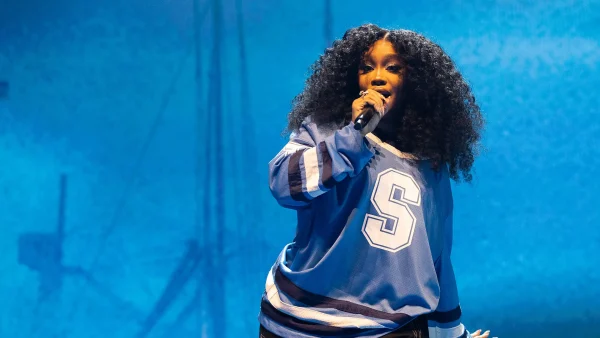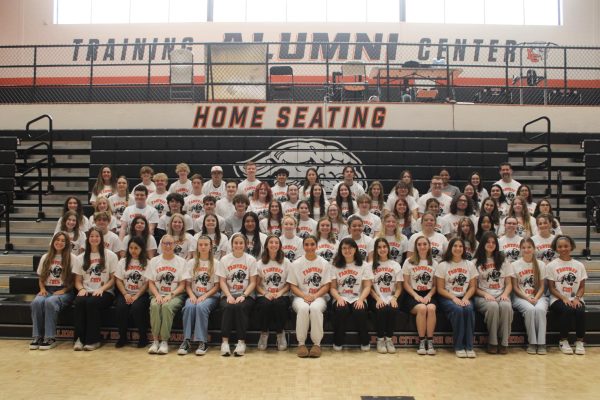Tell Me a Story: An “Alabama Story” Review
Every piece of art is made to make a statement, and the art of theatre is no different. Some stage performances may exist more for the sake of art than for the artist’s opinion, but all art makes a statement nonetheless. The statements made in Alabama Story are very poignant and easy to understand.
Currently, the Clarence Brown Theatre is performing a run of Alabama Story. The story revolves around a children’s book and the argument of what the book represents. In a synopsis of the play from the Clarence Brown Theatre’s website:
“A gentle children’s book stirs the passions of a segregationist senator and a no-nonsense state librarian in 1959 Montgomery, just as the Civil Rights Movement is flowering. Inspired by true events, Alabama Story puts politicians, star-crossed childhood friends, and one feisty author in a struggle for the soul of the Deep South.”
To start: the set was pretty incredible. Well, a more accurate statement might be that the stage was incredible. That is not to say that they sets were not interesting. They were well made, and definitely added to the atmosphere and immersion into the setting. Most set pieces came on stage in one of two ways: they were either suspended by wires and lowered, or (and here’s the incredible part), they slid on stage via a moving platform that was built into the stage itself! There were two sections of the stage that were like this, one more upstage and the other downstage. They ran parallel to the audience, into the wings of the stage. The clever use of these sliding platforms added visual interest to the show.
Another high point of the show? The performances. The cast consists of just six actors and actresses, and they all did phenomenally. Due to the genuine and convincing performances, the audience was well invested in the lives, thoughts, and emotions of the characters and what they had to say. The cast includes:
- David Brian Alley as Garth Williams, the author of The Rabbit’s Wedding (the children’s book that is central to the plot), and other supporting characters,
- Jade Arnold as the courteous, well-educated Joshua Moore,
- Katie Cunnigham as the progressive and passionate librarian Emily Wheelock Reed,
- Chris Klopatek as Thomas Franklin, Emily’s attentive and supportive assistant,
- Brian Mani as Senator E. W. Higgins, the conservative representative who plays the antithesis to Emily Reed, and
- Brittany Marie Pirozzoli as the charming and conflicted southern belle Lily Whitfield.
There is a moment in the show where Joshua and Lily, who were previously childhood friends but who had not seen each other in ten years, are thrown back in time by memory, and the actors portray the same characters, but as children. This flashback is immediately obvious, even though there is no set change or even costume change. This is due to a cleverly written dialogue cue and the impressive acting by Arnold and Pirozzoli.
The plot actually consists of two different stories. The first story focuses on the battle over The Rabbit’s Wedding, the moral debate between Emily Reed and Senator Higgins. The argument considers the effect that reading has on a child’s moral development and the responsibilities one has, when they have the ability to act or to take a stand, to do so. The other story is of the interpersonal relationship between Joshua and Lily. This story explores how people compartmentalize troubling memories while also expressing the importance of staying informed and educated through reading, particularly the newspaper.
None of that is to mention the way the play addresses the Civil Rights movement, which the time period of the play is set just before. (On a seperate note, this play comes to the Clarence Brown Theatre at an appropriate time, being that February is Black History Month.) The issue behind The Rabbit’s Wedding is found in that many conservatives, including Senator Higgins, believe that the book promotes interracial marital. (In a humorous monologue by Garth Williams, he explains the irony of the debate, for the reason the reason the rabbits were black and white were simply for a visual distinguishment). The theme of racial differences is also addressed in Joshua and Lily’s story. Joshua’s mother worked as a servant to Lily’s parents. Though they were treated fairly well and had a friendly relationship, they kept a distinct divide between employer and employee.
Being children, this divide was not obvious to Joshua and Lily, until an unfortunate incident causes Joshua’s mother to leave the Whitfields’ service. This event was troubling for Joshua to experience, and it forever made his family’s lives harder. However, Lily has grown to deny the memories of this event, until she is reunited with Joshua and he reminds her of this event.
As someone with an appreciation for well-written, well-directed, well-acted theatre, I found the experience of this play delightful. I caught myself having strong emotional reactions to the sentiments and the memories shared by the characters, even tearing up at the points of high emotion. I cared about the characters, and I wanted them to resolve all of their own distinct personal conflicts in a way that found them to all be happy.
Overall, the play was a wonderful time, and I would easily recommend seeing it to anyone. Strong performances, compelling characters, and a story that feels as relevant in the 50s as it does today make this show one worth seeing.
Sources:
https://clarencebrowntheatre.com/plays/alabama-story/










